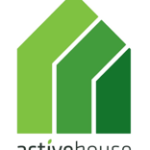022 Service Center of Harbin Sino-German Eco-Tech Town
Address of the project: Harbin, Heilongjiang, China
Owner/investor –
Architect: Harbin Haiping Hi-Tech Real Estate Co., Ltd. – Fang Yunfei (Architectural Design & Research Institute of Tsinghua University Co., Ltd.)

The building can actively sense the environment. The open office area and individual offices are designed with environmental monitoring and analysis equipment to record and display various data, including building energy consumption, indoor and outdoor temperature, humidity, CO2 concentration, PM2.5 concentration and illuminance. Two large LED displays in the lobby and several smaller ones in the office area share real-time indoor and outdoor environmental data, which will be analyzed and kept for one year. Effective sound insulation measures keep the noise level under 40 dB in multi-person office space. And sound-absorbing materials, indoor partition walls, doors, windows, and other partition components ensure the sound insulation performance ≥ 30 dB.
The planar layout features free space combination instead of cubicles in traditional multi-floor office buildings. The internal Communication Hall encourages more interaction among humans, the building, and nature. The stairs in highly accessible areas in the middle welcome people to move more, and the terrace, balcony and accessible roof serve as the perfect choice for a breeze of fresh air. The art exhibition area rephrases aesthetic experience to the office space. Combined with the dynamic and static zoning, the visit circulation guarantees a pleasant experience for both visitors and workers. In addition, the public space sees uninterrupted barrier-free passage with due consideration to the needs of people of all ages.
The outdoor bicycle parking lot completes a continuous barrier-free system between the site, public green space and urban roads and promotes greener mobility by connecting the planned urban bicycle network. The pedestrian and vehicle circulations are separated within site, with priority parking spaces for electric vehicles and car-pooling on B1.

Some curtain walls apply the intelligent curtain system, with a K value of 0.79 w/m2·K. At the same time, the cold storage in the morning and evening in summer and heat storage in the transitional season reduce energy consumption. The daylighting and light pipes in underground space also significantly cut down lighting energy consumption. With a series of energy-saving measures, the building’s energy consumption is 32.90% (by design) lower than that of the reference building designed against ASHRAE Standard 90.1.
The interior walls adopt lighter tones, low-reflection materials, and diffused lighting with anti-glare designs to reduce lighting energy consumption. The daylight is fully introduced into the building. The well-lit area of the atrium serves as the public leisure space, while the space without direct daylight acts as auxiliary space. The light pipes bring the daylight into the underground gym and garage, significantly saving lighting energy consumption.
All frequently-used spaces inside the building are provided with operable viewing windows for favorable wind and light environment. The westward arch can minimize the heat of the setting sun, and the large solid walls also insulate most heat. Each room can choose its optimal, seasonal window opening plan and adjust the air temperature by opening and closing windows and adjusting the sunshade. The horizontally pivoted electric smoke exhaust window on the top of the atrium combines with the natural smoke exhaust system to ensure the building’s best natural ventilation and natural and aided smoke exhaust.

The building is equipped with Grade I water-saving appliances with water dispensers available every 30m. And the signage system at water dispensers and washrooms helps promote the water-saving concept. Furniture with both China Environmental Labelling and GREENGUARD certification is selected, and over 25% of all work stations are adjustable, better conforming to ergonomic principles. The adaptable design responds to the changing needs of space, and the flexible partition design makes the space more elastic. We strived to maximize the proportion of renewable energy and control the water and soil loss during the construction. And by better arranging construction operations, we were able to prevent flying dust and allay heat island effect.

RADAR



